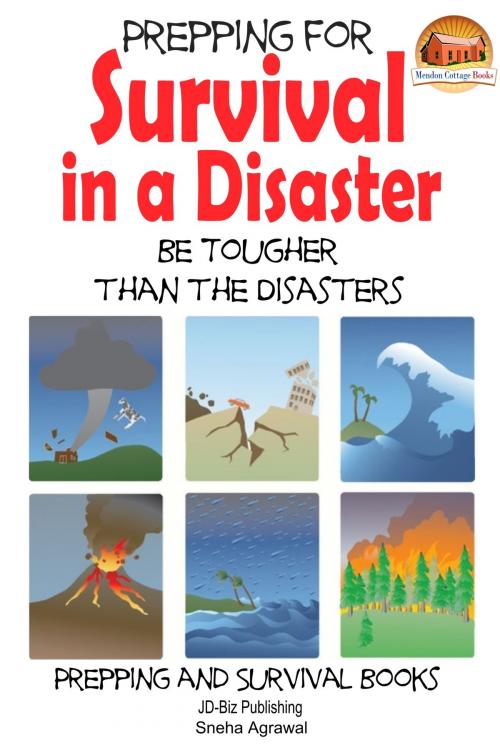Prepping for Survival in a Disaster: Be Tougher than the Disasters
Nonfiction, Health & Well Being, Health, First Aid| Author: | Sneha Agrawal | ISBN: | 9781311459213 |
| Publisher: | Mendon Cottage Books | Publication: | January 4, 2015 |
| Imprint: | Smashwords Edition | Language: | English |
| Author: | Sneha Agrawal |
| ISBN: | 9781311459213 |
| Publisher: | Mendon Cottage Books |
| Publication: | January 4, 2015 |
| Imprint: | Smashwords Edition |
| Language: | English |
Prepping for Survival in a Disaster - Be Tougher than the Disasters
Table of Contents
Introduction
Chapter 1 – Disaster Management Cycle
Chapter 2 – Kinds of Disasters
Chapter 3 – Prepping in General
Chapter 4 – Survival during a Terrorist Attacks
Chapter 5 – Survival during a Natural Disaster
Chapter 6 – Survival during Chemical or Manmade Disasters
Chapter 7 – Surviving Disasters of Sabotage
Chapter 8 – Surviving a Disaster of Public Disorder
Chapter 9 – Surviving Disasters of Technical Mishaps
Conclusion
Author Bio
Publisher
Introduction
Disasters just happen; they do not send signals before happening, and one must be prepared to combat any such situations in life. Disaster management is basically the self-preparedness before a disaster, at the time of the disaster and post disaster. Being prepared for the worst does not necessarily mean you will avoid worst, but it can definitely mitigate the effects of the worst.
Disasters can be caused naturally, and can be planned to bring some harm to a specific person or to a group of people. Whatever the case may be, it still brings a lot of pain and suffering along with it. This iswhy it is important that we try our best to avoid any kind of disasters from affecting our own lives.
Disasters have certain features, and one must be prepared according to the type of the disaster. The features are listed below:
-Duration (short term vs. long term)
Some kinds of disasters happen for a short interval of time and it takes less time to bringour lives back on track, whereas some of them take a lot of time to resolve. A classic example for the first scenario can be a local riot and the second one can be nuclear radiation out of a chemical blast.
-Scale (affecting individual or masses)
There are a few situations that are very personal in nature, like your career getting sabotaged, or your water heater breaking. Then there are other circumstances like terrorist attacks, floods and etc., which inflict pain among a huge mass.
-Recovery Time (Days/ Months/ Years)
Situations like local theft or protests get under control within few days, but there are situations like nuclear radiation that leaves their effects for years to come.
Prepping for Survival in a Disaster - Be Tougher than the Disasters
Table of Contents
Introduction
Chapter 1 – Disaster Management Cycle
Chapter 2 – Kinds of Disasters
Chapter 3 – Prepping in General
Chapter 4 – Survival during a Terrorist Attacks
Chapter 5 – Survival during a Natural Disaster
Chapter 6 – Survival during Chemical or Manmade Disasters
Chapter 7 – Surviving Disasters of Sabotage
Chapter 8 – Surviving a Disaster of Public Disorder
Chapter 9 – Surviving Disasters of Technical Mishaps
Conclusion
Author Bio
Publisher
Introduction
Disasters just happen; they do not send signals before happening, and one must be prepared to combat any such situations in life. Disaster management is basically the self-preparedness before a disaster, at the time of the disaster and post disaster. Being prepared for the worst does not necessarily mean you will avoid worst, but it can definitely mitigate the effects of the worst.
Disasters can be caused naturally, and can be planned to bring some harm to a specific person or to a group of people. Whatever the case may be, it still brings a lot of pain and suffering along with it. This iswhy it is important that we try our best to avoid any kind of disasters from affecting our own lives.
Disasters have certain features, and one must be prepared according to the type of the disaster. The features are listed below:
-Duration (short term vs. long term)
Some kinds of disasters happen for a short interval of time and it takes less time to bringour lives back on track, whereas some of them take a lot of time to resolve. A classic example for the first scenario can be a local riot and the second one can be nuclear radiation out of a chemical blast.
-Scale (affecting individual or masses)
There are a few situations that are very personal in nature, like your career getting sabotaged, or your water heater breaking. Then there are other circumstances like terrorist attacks, floods and etc., which inflict pain among a huge mass.
-Recovery Time (Days/ Months/ Years)
Situations like local theft or protests get under control within few days, but there are situations like nuclear radiation that leaves their effects for years to come.















